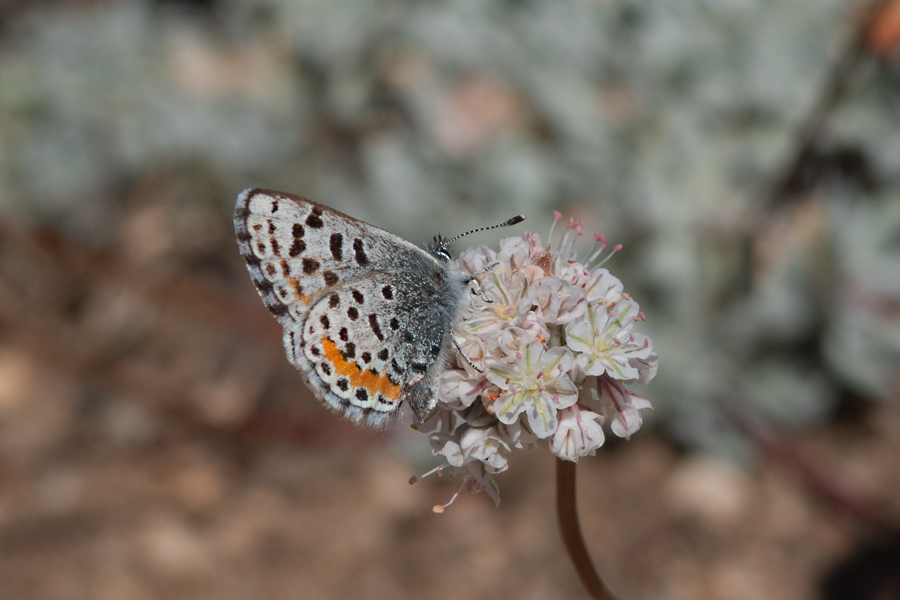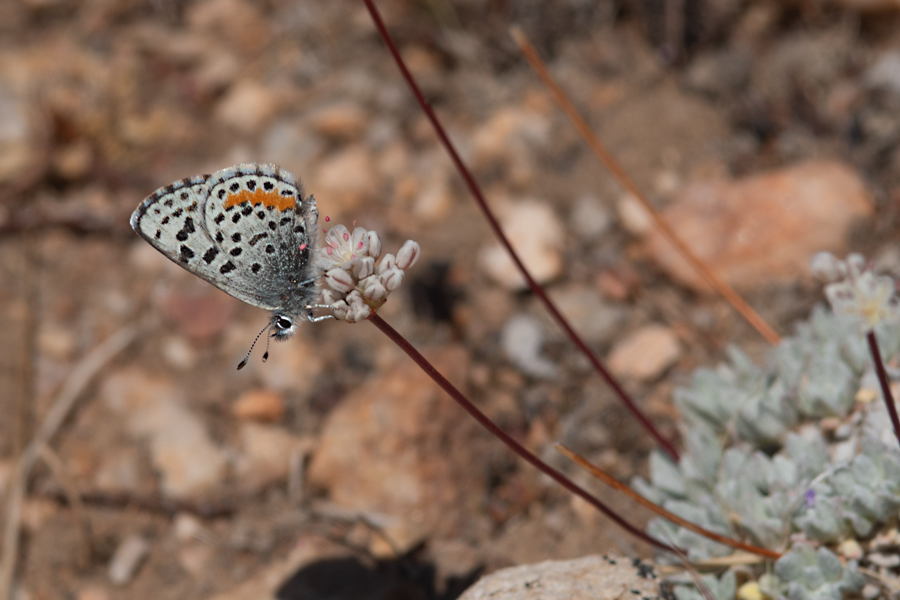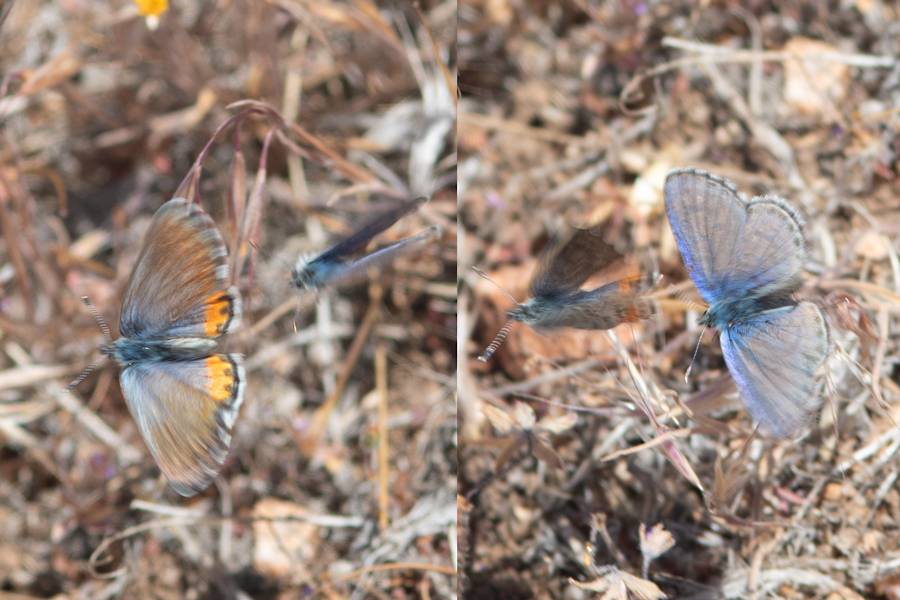Euphilotes baueri vernalis
Vernal Blue (Coxey Meadow)
Euphilotes baueri vernalis is an early-flying blue that uses Eriogonum kennedyi at Coxey Meadow. There is apparently a population in the Coso Mountains as well. This butterfly's habitat at Coxey Meadow is ca. nine miles northwest of Big Bear Lake in the San Bernardino Mountains. Identifying this blue in the field can be tricky because the mid-April to mid-May flight (depending on precipitation) partially overlaps the similar Bernardino blue, which flies from ca. early May into the summer. Bernardino blues are a very common species of Euphilotes and generally use Eriogonum fasciculatum (California buckwheat) as a larval host, but they nectar in the patches of kennedyi. In the original description, Gordon Pratt says that "in most cases, the narrow black borders of the males and the presence of blue on the females will distinguish vernalis from bernardino." Pratt has also said (pers. comm.) that bernardino "has a narrower orange aurora, smaller spots, and brown dorsal wing color on the females. Euphilotes baueri has extensive blue on both females and males. The male even has a narrow black border dorsally compared to bernardino." So the key is to get a good look at the top (dorsal side) of the wings if you can.
Dr. Pratt collected the holotypes and paratypes over several years between 1985 and 1989. He and John Emmel described vernalis in a revision of the Euphilotes enoptes and E. battoides complexes in the 1998 Systematics book (beginning p.207). Pratt's doctoral disseration in 1988 was on "The evolution and biology of Euphilotes biotypes," and he is someone I consider the leading authority on southern California's blues.


